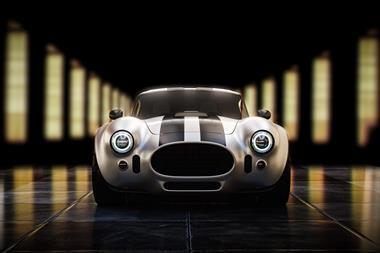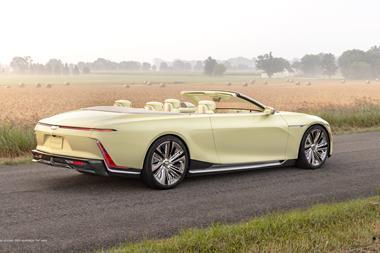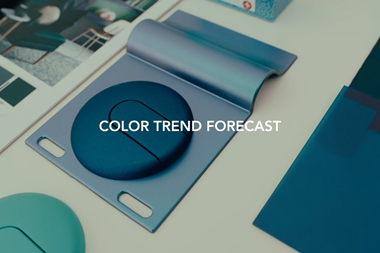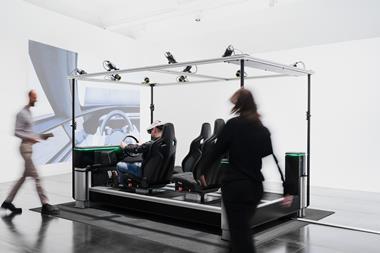![]()
So how does one become a car designer? It’s a question we are asked quite often at Car Design News. I’m sure many of you have either asked it, or answered it, at some point in your life or career.
We asked David Cole of the Academy of Art College to help provide you with some answers about a career in automotive design...
CDN: David, can you provide a brief summary of your educational and professional experience to date as background for our readers who may not be familiar with your work?
DC: I grew up and went to school in Northern Ireland, after which I moved to Coventry, England to study Industrial Design/Transportation at Coventry Polytechnic. This was a four year BA Honors Degree that included a 6-month internship.
Upon graduation I was offered both a sponsored position at the Royal College of Art’s MFA program in London, and a job at Motor Panels Ltd of Coventry. I was hungry to start work and so I decided to spend the next two years working as opposed to going on to further education.
After one year at Motor Panels I moved on to Ford’s exterior design studio in Cologne, Germany where I worked for the following four and a half years. That was followed by seven years at various Volkswagen design studios in Germany, Spain and California. And most recently I moved to San Francisco to work at the Academy of Art College in 1997.
CDN: When did you know you wanted to be an automotive designer?
DC: It was not until I began working at my first job with Motor Panels that I discovered that I wanted to be an automotive designer. I enjoyed the large-scale truck and bus projects there although I soon found commercial vehicle design to be somewhat limited, and that is when I decided to design cars.
CDN: How did you find learn there was a profession called automotive design?
DC: While at high school I came across a car design competition in a British car magazine. The winning designs from students and professionals were published, and the artwork just blew me away. There were brightly colored sketches and renderings using marker, airbrush and chalk unlike any drawings I had seen before. I knew then that this was for me.
CDN: Can you describe your career as an automotive designer?
DC: My first job at Motor Panels gave me a lot of freedom, but the work was limited in terms of creativity. That is when I decided to get into automotive design and after a year at Motor Panels I had put together a new portfolio and earned a position at Ford’s design studio in Cologne.
I learned a great deal while at Ford and it was there that I got my first taste of computer-aided design. Along the way I worked on a number of projects including the Scorpio and Mondeo. In 1991 I moved to Volkswagen’s new Californian design studio and assumed the position of senior designer. One of my first tasks was to set up a computer studio within the design studio, and as it turned out I was practically the only user of the 2D and 3D systems that were installed.
I spent a couple of years in California before returning to Germany where I was appointed manager of one of Volkswagen’s exterior design studios in Wolfsburg. While at Volkswagen I continued to work with computers wherever possible and along the way worked on the following projects: Passat, Polo, Golf, Jetta, New Beetle.
I also oversaw a couple of projects at VW’s SEAT design studio in Spain, and due to my increasing knowledge of computer surfacing I was put in charge of the development and sign off of several final surface models scheduled for production including the award winning New Beetle.
CDN: What and who are your influences with respect to design?
DC: At high school I studied architecture and became influenced by the works of Frank Lloyd Wright, Mies van der Rohe, and Walter Gropius. At college I was introduced to the world of car designers and became most impressed by the works of the Italian masters: Giugiaro, Pininfarina, and Bertone.
As a professional automotive designer at Volkswagen in the 1990’s I was greatly influenced by the then new design leadership of Hartmut Warkuss.
CDN: What is your vision of automotive design change in the future?
DC: There are many different areas that influence automotive design: The next generation of future vehicles will be based around hybrid power, allowing them to be much more fuel-efficient. Alternative fuels like hydrogen will follow this. Future designs may become more space efficient due to ever increasing population and traffic, and interior design will play a more important role.
Car interiors will become multi-functional and modular, and will be fitted with the latest in computerized communication systems and in car entertainment. Future manufacturing technology/rapid prototyping will allow for "customization" of designs as is currently the case with the Smart vehicles in Europe.
Safety is a big issue that has seen car develop enormous bumpers, side impact beams, and multiple airbags over the years. These are just a few of the requirements have to be incorporated into a new car design, and that is what makes designing a car today so challenging.
In the past some car designs have been criticized as being bland and too similar to each other. As a result companies have developed brand imaging groups whose responsibility it is to develop individual identities for their various products. If adhered to, hopefully there will never be another bland period in the history of automotive design, so the forecast looks good.
CDN: What are your top 5 favorite all-time automotive designs and why?
DC: It would be difficult to pick just 5 and call them the best, so here are 5 significant designs from different periods of my life: As a young child I grew up around my father’s Volkswagens, and remember the Beetle as a distinctive design that stood out from the crowd.
While still a child I followed the TV show “the Saint” and became exposed to Volvo’s P1800, one of the nicest designs Volvo ever produced. Both designs obviously made an impression upon me at an early age (pre 10).
In my teen years I developed an interest in motor sports, and Porsche’s 917 was a car that became a favorite of mine. Not only was it a highly successful racing car, it was also great looking.
The very first Lamborghini Countach was a one-of-a-kind design of outrageous proportion, and there will probably never be another car like it. And more recently the TT is a modern classic that symbolizes Audi’s design philosophy, and also happens to be my current mode of transport. The attention to detail inside and out is incredible, and the proportions are straight from the designer's sketches.
CDN: Can you describe the automotive design program at AAC
DC: I can split it up into four main areas: Drawing, Model making, Computer skills, and Design classes. We teach traditional drawing and model making techniques, but at the same time students also learn how to draw and build models using the latest computer software.
From my personal experience companies can be very different in their approach to design and their use of computers (or lack of), therefore we cover all options so that our students are prepared for all possibilities. The design classes allow students the possibility to use traditional and/or computer techniques to achieve their goal.
Fall and spring semesters are each 15 weeks long, and we also offer a 7-week summer semester.
CDN: How does do Industrial Design and Automotive Design relate to one another at AAC?
DC: The department that I am directing is called Industrial Design. Within this department we offer 4 majors: Transportation, Product, Furniture, and Toy. Many of the core classes are shared between these four majors.
CDN: Can you describe the typical background of a student in your program?
DC: The majority comes to us fresh from high school, although we also have a number of second-degree students too. The majority is American, followed by a large number from the Asia-Pacific region and a smaller amount from Europe. It makes for a unique blend of personalities.
CDN: What is the average age of students in your program?
DC: Early to mid 20’s.
CDN: What is the male/female ratio of students in your program/at the college?
DC: The Industrial Design department has a large proportion of male students, I would say about 90%. Whereas other departments for example Fashion and Graphic design are almost entirely made up of female students. I would like to see more female students in this department. They have proven to be as successful as their male counterparts.
CDN: How many faculty members are in your program, and what is the student to faculty ratio??
DC: Currently we have 3 full-time faculty, and about 20 part-time faculty. We have 200 students in the program, so that makes it about 8:1
CDN: What are the qualifications of your faculty members?
DC: The faculty who teach the design classes are all highly qualified with a college degree and anything up to 30 years of working experience. We hire them based on their background and portfolio, as well as their interest to teach. The majority of our faculty are practicing designers in the San Francisco bay area who give up one or two days a week to come and teach at AAC.
We offer daytime, evening, and Saturday classes to accommodate instructors’ schedules, and sometimes we will fly an instructor from LA (or even further away) to teach a class. Fortunately the bay area is very rich in design talent, so there are many experienced designers of products, cars, toys, and furniture who live locally.
CDN: What qualifications are required for entry into your program?
DC: AAC has an open enrollment policy to allow everyone an equal opportunity. This means that there is no portfolio requirement to enter, although more and more new students are submitting portfolios anyway. However the Graduate program has a portfolio requirement to gain entrance.
CDN: What do you look for in prospective student?
DC: Creativity and a desire to learn.
CDN: How are prospective students evaluated for admission?
DC: As I mentioned, they are not evaluated at this stage, however evaluation takes place in each and every class resulting in a final grade, which will determine if the student will be able to continue beyond that class.
CDN: How should a student choose a design school?
DC: For those students specializing in automotive design this will be easier than industrial design because there are fewer schools to choose from. Wherever possible students should visit the school and create a personal impression of the school and its staff, it is important to feel comfortable with your choice.
Another important factor should be the schools employment statistics. Location is important too - For example, the San Francisco bay area has the highest concentration of IDEA-winning design studios, providing many internship and teaching possibilities. How the school/department is equipped is also important - AAC have been very supportive in providing its departments with the latest state-of-the-art equipment.
CDN: Why should a student consider AAC’s automotive design program?
DC: We have created an excellent program with the aim to prepare students for their first job in the industry. This is achieved through a newly developed curriculum, quality instruction, internship placements and sponsored projects. Another factor to consider is the cost of education, and AAC is one of the most affordable art schools in the nation.
CDN: What is the area like around AAC ?
DC: The department is situated at a Warehouse on Van Ness Avenue, Pacific Heights that is part of Highway 101 leading to the Golden Gate Bridge. There are great views nearby and plenty of shops, bars and restaurants. San Francisco is a relatively small pedestrian-friendly city so it is easy to get around by foot. There is a public transport system throughout the city and AAC also has its own fleet of buses that are free to all students and staff.
CDN: What is the placement rate for internships?
DC: The transportation program was started three and a half years ago with three students. As a result of this we have a small number of senior students who are eligible for placement. These students have so far been placed at Ford Motor Company, General Motors, Audi, Volkswagen, Prisma Design and Think. On the product design side we have a continuous flow of students through the many Bay area design studios including Gingko Design, Fitch, Frogdesign, Pentagram, Flextronics and Astro design.
CDN: Describe a typical internship for an automotive designer?
DC: Most of our interns have been fortunate enough to work on real world projects alongside qualified designers. Internships generally last from 3 to 6 months. Some are full-time, while others are part-time allowing students to continue with classes while interning.
CDN: What is the placement rate for full-time employment after graduation?
DC: 100%: To date we have graduated four transportation majors: Two US citizens were hired by Ford’s Lincoln Mercury division, and of the two foreign graduates, one is freelancing in California, and the other was hired by Mitsubishi in Japan.
CDN: What are the opportunities for international placements?
DC: Very good. So far we have had students at Volkswagen in Germany, GM in Brazil, and Think in Norway. Recently a number of our students applied for an internship at Volkswagen’s satellite studio in Spain, and are eagerly awaiting a reply.
CDN: What types of projects would an entry-level automotive designer do?
DC: This depends a lot on the studio environment. In a large corporate studio a new designer will typically have to work his way up, starting with simple projects such as wheels, mirrors, facelifts. In a smaller satellite studio a new designer may have a greater chance of working on a complete car design at an earlier stage.
CDN: What types of manual and digital tools do automotive designers use to do their work?
DC: The manual tools have not changed: pencil, ball pen, marker, chalk, and airbrush are used on sketchpads, marker paper, vellum, and of course the occasional paper napkin. Paper tapes are still used to create 1:1 tape drawings on Mylar.
As far as digital tools are concerned, ALIAS produces both 2D drawing and 3D modeling software that has become the industry standard in automotive design. Many companies use digital projectors with 3D visualization software in order to evaluate digital work at a 1:1 scale. Some companies are also experimenting with holographic displays.
For more information on the Transportation Design course, as well as other Academy of Art College design courses, visit the AAC website: www.academyart.edu

Academy of Art College studios in San Francisco

'Quad' scale model by Mark Gonzales

BMW concept sketch by Jonathan Chang

Student Jeong-Hwan Hong sketching interior details

Student Carlos Trillo developing ideas for the rear of the car
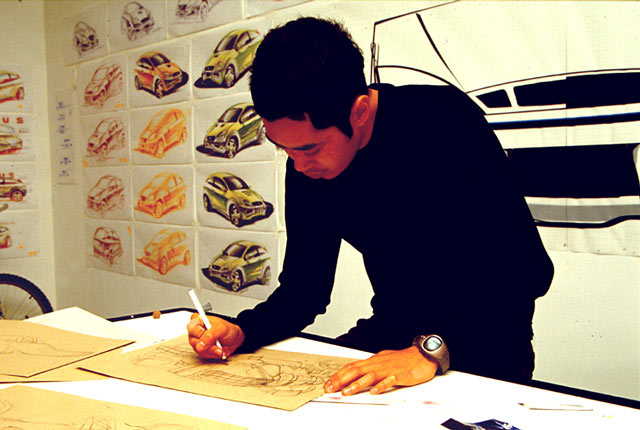
Student Ronaldo Carreon working on the front end design

Sketch proposals from the studio

Student Carlos Siwi prepares for a presentation

Student Tom Liu experimenting with a scale model of the Ford Focus

A selection of images used for color samples

Color and trim material samples
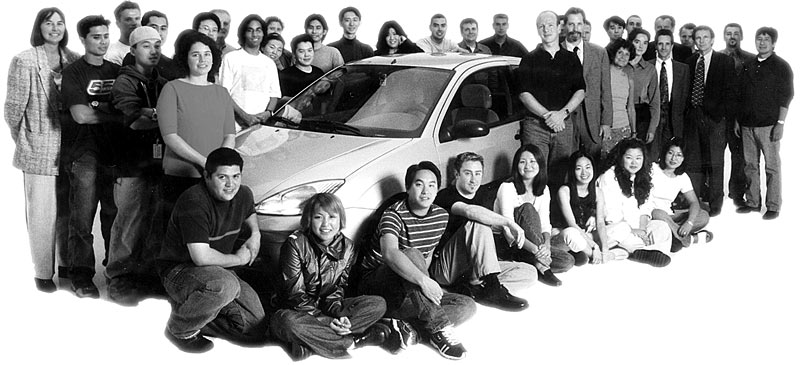
Students and staff with the Focus 2001 project vehicle










